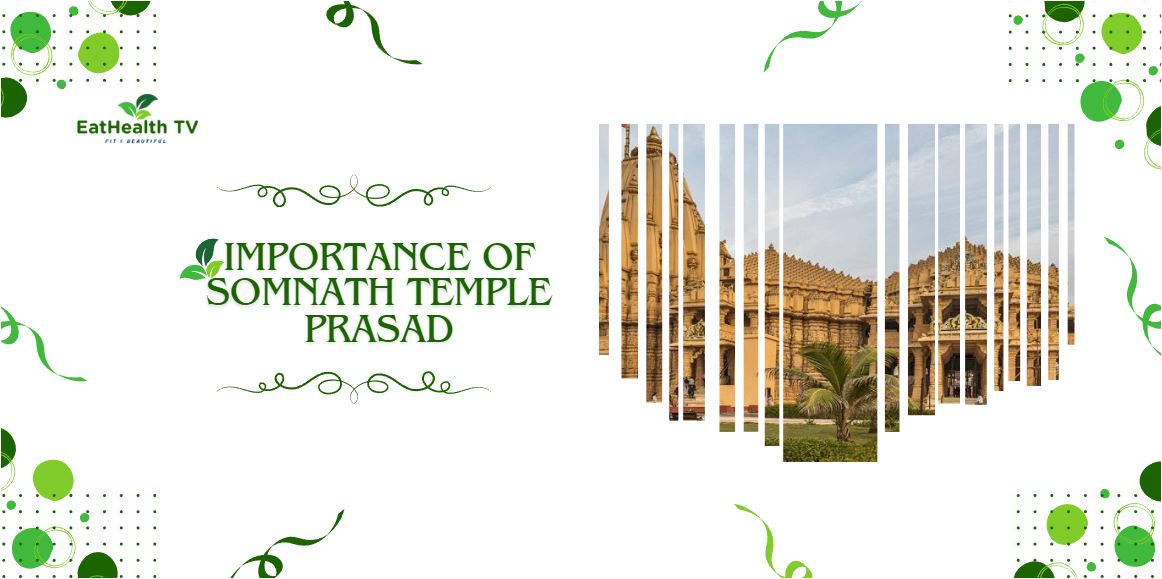Importance of Somnath Temple Prasad
Divine Delicacy: Unlocking the Secrets of Somnath Temple Prasad

Understanding the Importance of Somnath Temple Prasad
The Somnath Temple stands as a testament to India’s rich cultural and religious heritage, nestled in the serene beauty of Gujarat. This ancient temple, dedicated to Lord Shiva, not only holds historical significance but also offers a spiritual haven for countless devotees. Central to the experience of visiting Somnath Temple is the offering of Prasad, a divine offering bestowed upon devotees. In this comprehensive exploration, we delve into the importance of Somnath Temple Prasad, uncovering its spiritual significance, cultural relevance, and the cherished traditions that surround it.
Understanding Prasad:
A Divine Offering At the heart of Hindu worship lies the concept of Prasad, a divine offering given to devotees by the grace of the deity. Prasad embodies the sacred connection between the worshipper and the divine, carrying with it the blessings and purity of the temple. The offering of Prasad symbolizes gratitude, devotion, and the acceptance of divine grace into one’s life.
Somnath Temple, one of the twelve Jyotirlingas of Lord Shiva, holds Prasad in high esteem. The offerings here are not merely material goods; they are imbued with spiritual significance and historical reverence. Devotees flock to Somnath not only to seek blessings but also to partake in the sanctified Prasad, believing it to be a conduit of divine blessings.
The Rituals of Prasad Preparation
The preparation of Somnath Temple Prasad is a meticulous and sacred process, steeped in tradition and devotion. Skilled temple cooks, known as ‘Brahmins,’ undertake the responsibility of creating these divine offerings. The ingredients used are carefully chosen, reflecting purity and auspiciousness.
One of the most cherished Prasads at Somnath Temple is the sacred ‘Ladoo.’ This sweet delicacy, made from flour, sugar, and ghee, holds a special place in the hearts of devotees. The ‘Ladoo’ symbolizes the sweetness of devotion and the fulfillment of prayers. Additionally, ‘Kesar Peda,’ ‘Chikki,’ and ‘Coconut Barfi’ are among the other delectable Prasad offerings that grace the temple’s sanctum.
Every step of the preparation process is infused with prayers and mantras, invoking the divine blessings of Lord Shiva. The aroma of these delicacies wafts through the temple, enticing devotees and filling their hearts with anticipation. Just as we know Importance of Draksharama Temple Prasad.
Understanding the Significance of Somnath Temple Prasad:
Somnath Temple Prasad holds immense spiritual significance for devotees. It is believed that partaking in this sacred offering not only nourishes the body but also purifies the mind and soul, bestowing divine blessings and grace upon the devotees. As a symbol of gratitude and devotion, Somnath Temple Prasad fosters a deep connection between the devotee and the divine, enriching their spiritual journey.
Ingredients Required for Somnath Temple Prasad:
- Chickpea Flour (Besan): 2 cups
- Sugar: 1 cup
- Ghee (Clarified Butter): 1 cup
- Cardamom Powder: 1 teaspoon
- Nuts (Almonds, Cashews, Raisins): A handful, chopped
- Water: 1 cup
Preparation Method:
- Roasting Chickpea Flour: Heat a pan over medium heat and add the chickpea flour. Dry roast it until it turns aromatic and golden brown, stirring continuously to avoid burning. This process may take about 10-15 minutes.
- Adding Ghee: Once the chickpea flour is roasted, add ghee to the pan and mix well. Continue to cook for another 5-7 minutes, stirring constantly.
- Adding Sugar: Gradually add sugar to the mixture and stir well until it is fully incorporated. Cook for an additional 2-3 minutes until the sugar melts completely.
- Adding Water: Slowly add water to the mixture while stirring continuously to prevent lumps from forming. Keep stirring until the mixture thickens and reaches a halwa-like consistency.
- Adding Flavor: Add cardamom powder and chopped nuts to the mixture and mix well. This will enhance the flavor and aroma of the Prasad.
- Cooking Further: Cook the mixture for another 2-3 minutes, ensuring that it is well combined and reaches the desired consistency.
- Offering to the Deity: Once the Prasad is ready, transfer it to a clean bowl and offer it to the deity at Somnath Temple with reverence and devotion.
Tips for Preparation:
- Consistency: Ensure that the Prasad reaches a halwa-like consistency before removing it from the heat.
- Stirring: Stir the mixture continuously to prevent it from sticking to the pan and forming lumps.
- Flavor: Adjust the amount of sugar and cardamom powder according to your taste preferences.
- Nuts: You can add a variety of nuts such as almonds, cashews, and raisins for added texture and flavor.
Conclusion
In conclusion, the importance of Somnath Temple Prasad extends far beyond its material form. It is a sacred offering that embodies the blessings, devotion, and cultural richness of Hindu tradition. From the meticulous preparation by temple Brahmins to the act of receiving Prasad with reverence, every step in this process is infused with spiritual significance.
YouTube Channel for Health related educational Videos
As devotees partake in the sweet offerings of ‘Ladoo,’ ‘Kesar Peda,’ and other Prasad delights, they are reminded of the sweetness of devotion and the divine grace that permeates their lives. The tradition of offering Prasad at Somnath Temple is not just a ritual; it is a sacred bond that unites devotees in their spiritual journey.
As we continue to uphold these traditions and pass them on to future generations, we ensure that the essence of Somnath Temple Prasad remains a beacon of light, guiding devotees on their path to spiritual fulfillment.
May the divine blessings of Lord Shiva, bestowed through the sanctified Prasad of Somnath Temple, bring peace, prosperity, and spiritual growth to all who seek its grace.




